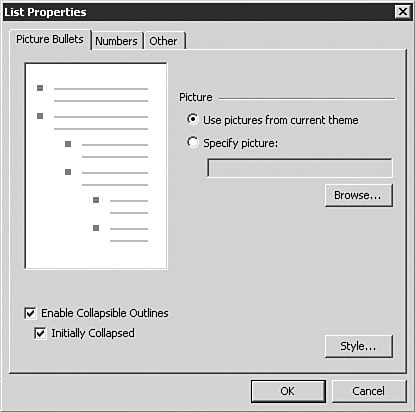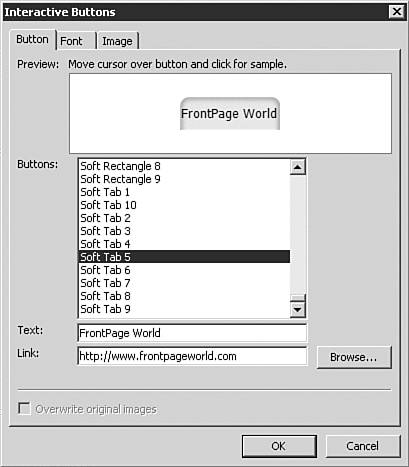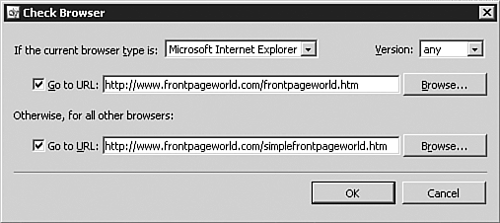Scripting, DHTML, and Dynamic Content
| In addition to the built-in handling of forms examined previously, FrontPage provides a number of tools integrated in to FrontPage 2003 that enable the rapid development (and management) of dynamic content elements. Dynamic Web Templates
Users can make any page in their site a Dynamic Web Template and use the technology to enlist project help that might have shied away from Web development because of their fear of making disastrous layout mistakes.
Adding Dynamic Elements to Your SiteDHTML (Dynamic HTML) has added numerous stylish options to the Web design process. Whereas you can use FrontPage 2003 to code the DHTML behind collapsible outlines, page transitions, and layers, FrontPage provides the tools to build these elements directly in to your site. As an example, Figure 2.21 shows a check box in the List Properties dialog box that results in a DHTML collapsible outline without a single line of code being written by the developer. Figure 2.21. When possible, FrontPage 2003 integrates DHTML options directly in to the design interface.
Interactive Buttons
TIP If you are using the older hover buttons on any of your Web sites, do yourself and your site visitors a favor and redo them with FrontPage Interactive Buttons. FrontPage 2003 holds the button content as metadata allowing the developer to quickly edit a button without having to reproduce the three different button elements each time an edit is required. Figure 2.22 shows the Interactive Buttons dialog box. By simply double-clicking the button in Design view, the user can edit the text of the button right in FrontPage. Figure 2.22. The Interactive Buttons tools makes the production of mouseover buttons considerably easier.
Behaviors
Figure 2.23. Behavior checks the browser type and sends them to the appropriate page.
Client-Side ScriptingBecause FrontPage 2003 handles all code types through the Code view, the design and implementation of client-side scripting directly through the FrontPage interface is supported. There is no need to use a third-party product to develop such solutions, and all scripting languages are supported not just Microsoft-specific languages.
Design-Time LayersCSS and modern design elements utilize design-time layers in the Web design process. FrontPage 2003 not only supports design-time layers, but also provides a set of tools to implement them quickly and easily in the design process.
|
EAN: 2147483647
Pages: 443
 For more on the use of Dynamic Web Templates and their implementation,
For more on the use of Dynamic Web Templates and their implementation, 

